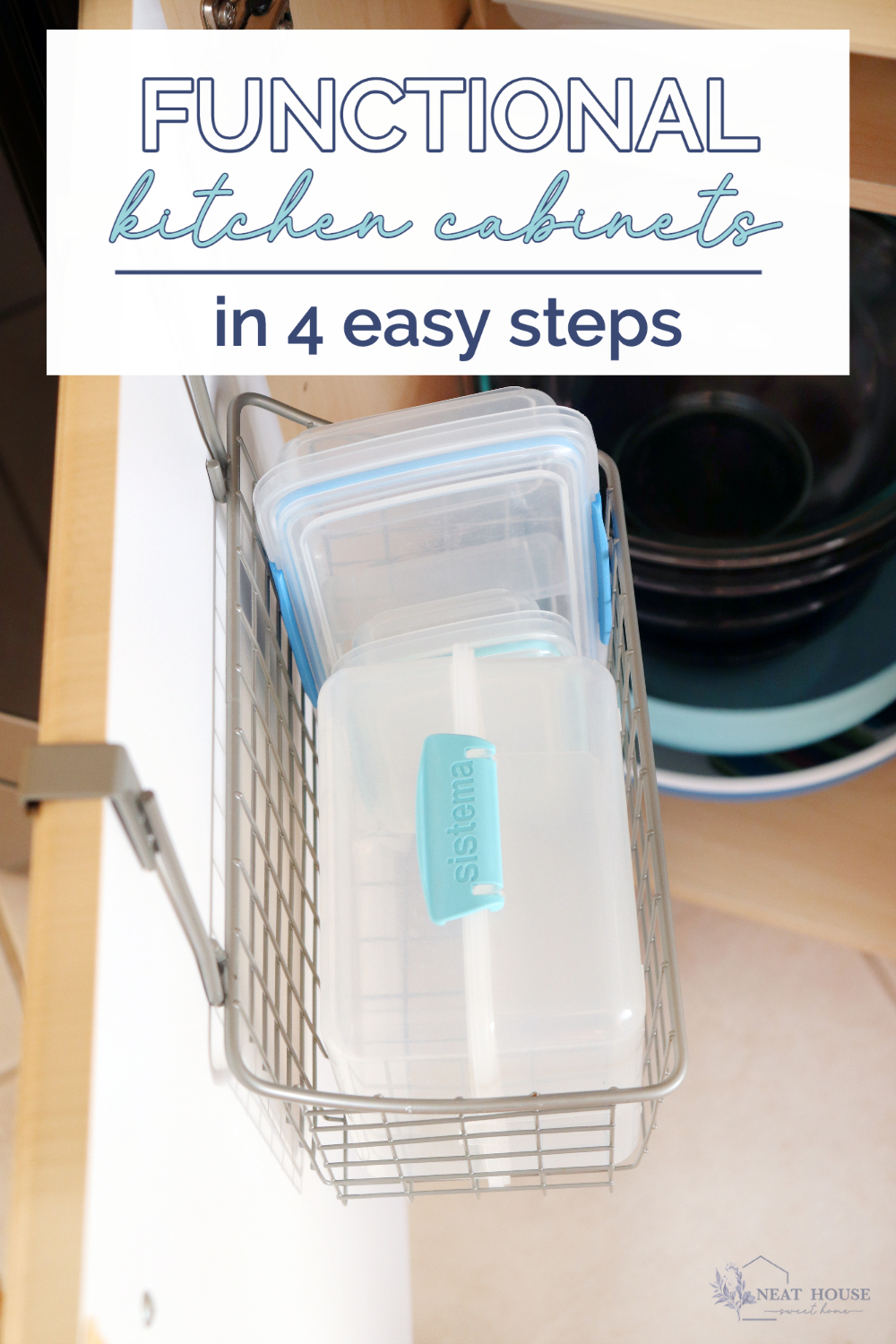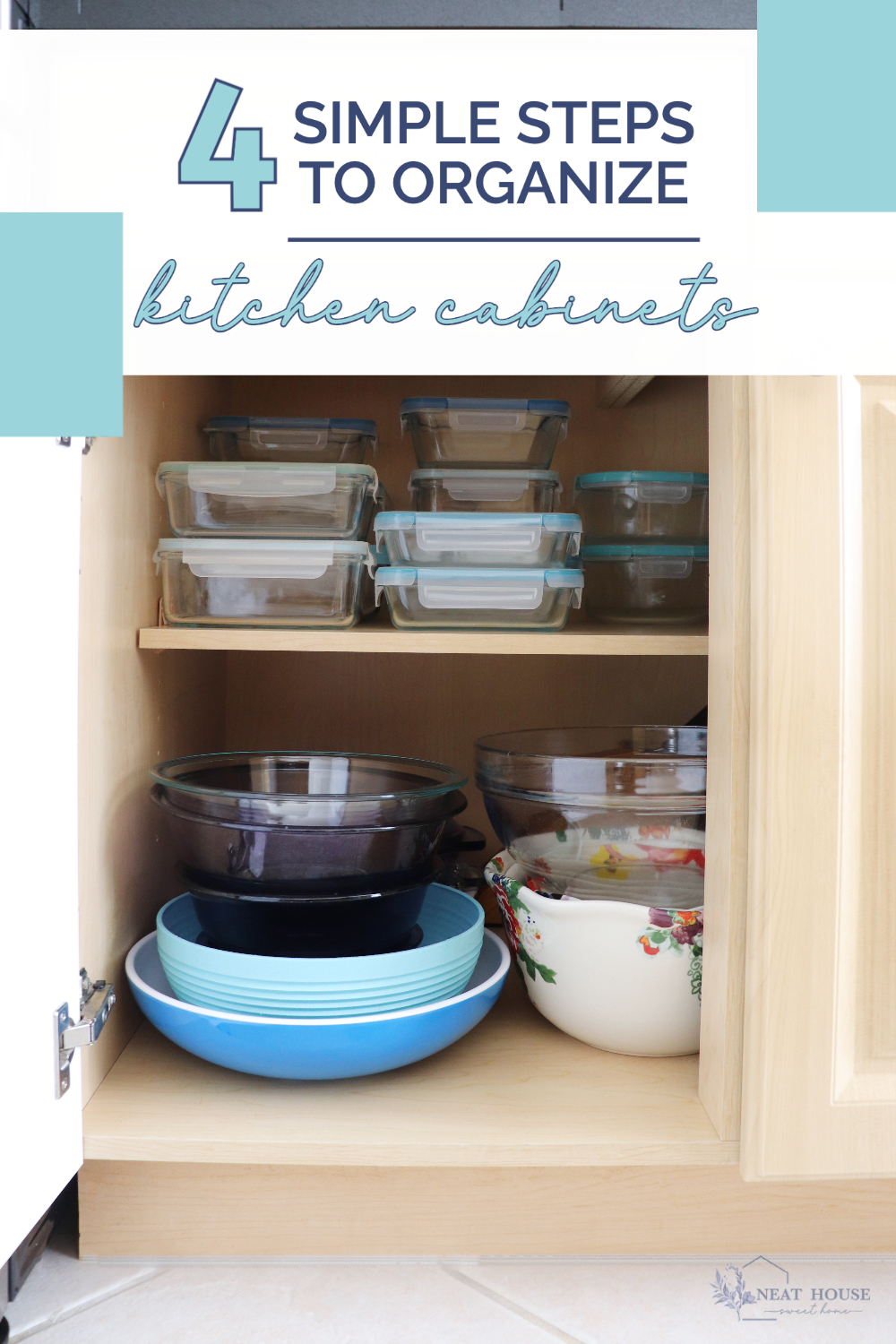Functional Kitchen Cabinet Organization
An organization strategy ideal for kitchen shelves and cabinets. Here’s how to organize bowls, food storage containers, casseroles, and more, inside your kitchen cabinets without frustration.
There’s an organizing strategy I use in every organization project. This is the same strategy professional organizers follow to determine the placement of things in any space. In this quick kitchen cabinet organization, I break down the strategy into four factors you need to consider.
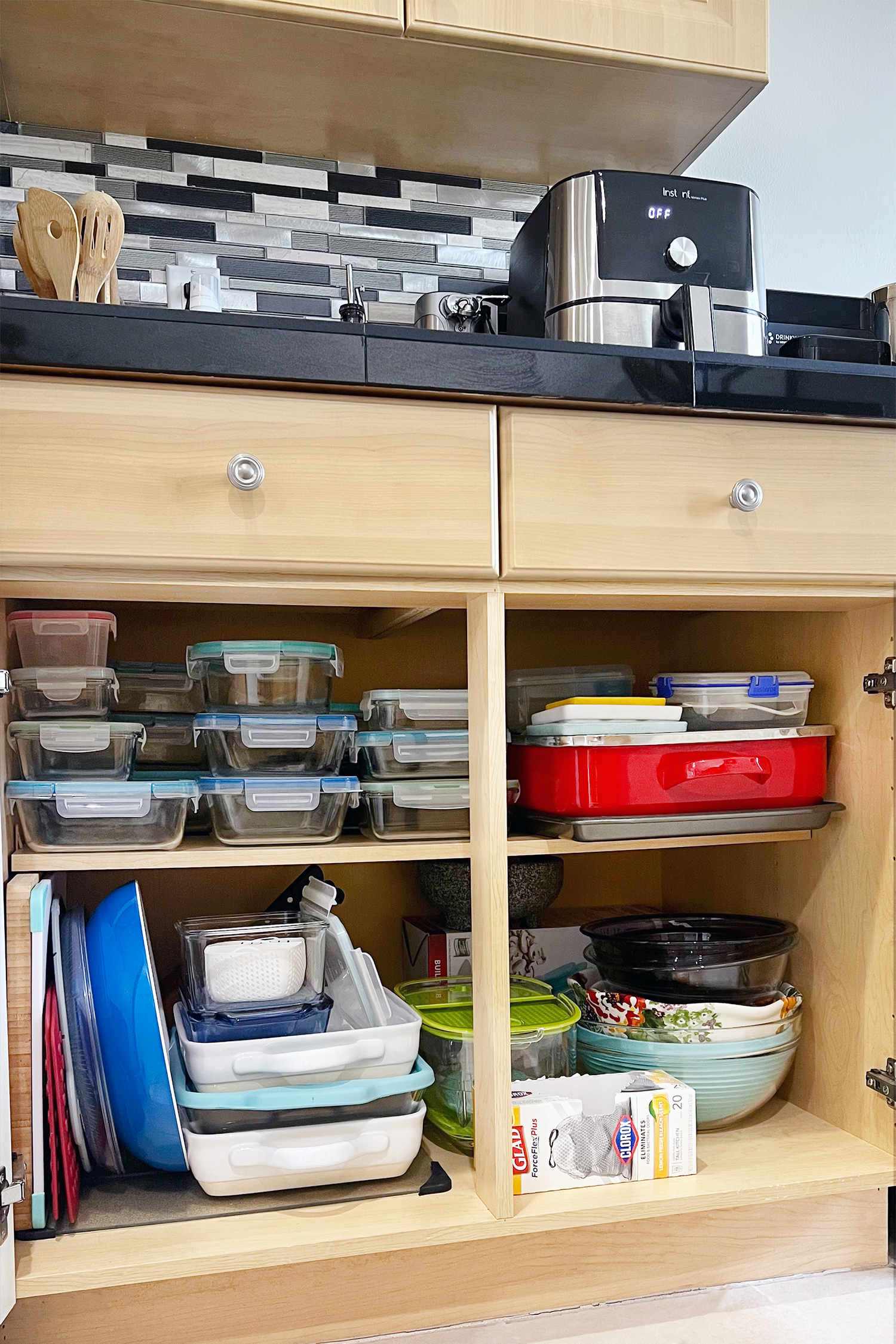
I’ve mentioned before that many of my organization projects happen in the spur of the moment. Sometimes is an inspiration; other times is aggravation and desperation. In this case, aggravation led me to organize the shelves inside this kitchen cabinet.
I was unloading the dishwasher and putting things away inside the cabinet. It must have been one of those days when every single dish was clean, and nothing was fitting back inside the cabinet. So, I gathered it all, laid it on a table, and in 15 minutes, I decluttered, cleaned, and reorganized the space.
This post contains affiliate links for your convenience. For more information, please read my Affiliates Disclosure.
How to Organize Kitchen Cabinets
For illustration purposes, I took pictures of the kitchen cabinet where I store bowls, food storage containers, and casseroles. I followed this same process when I organized the two cabinets where I keep my small kitchen appliances.
You can use this same organization strategy and ideas in some or all the cabinets in your kitchen or any other space in your home. The key is to consider four important organization principles instead of just putting things back inside the kitchen cabinet in a ‘however it fits’ manner.
These four principles are:
- Category
- Order
- Proximity, and
- Ease of Use.
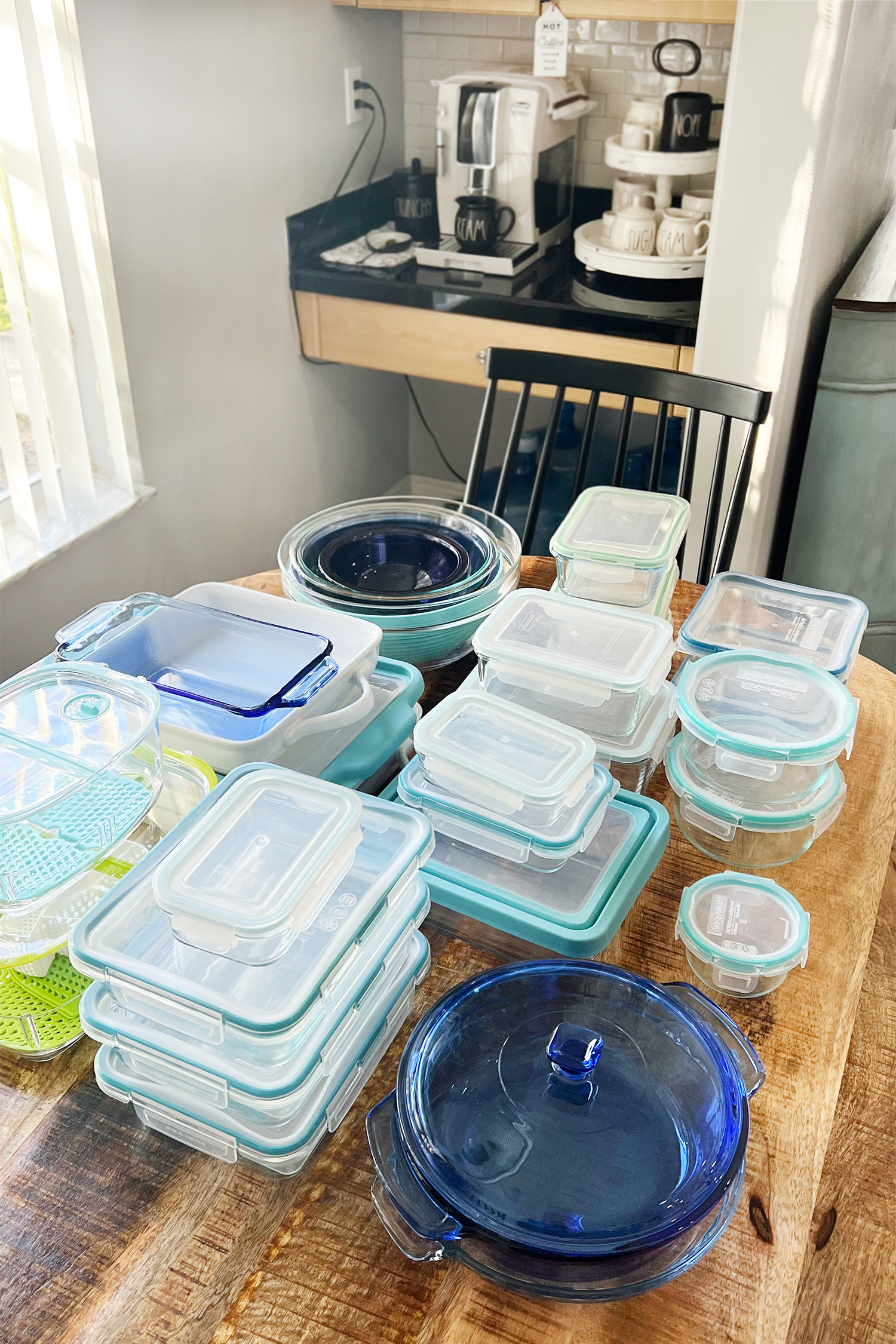
So now, let’s use this kitchen cabinet as our starting point.
1. Category
Items that can be grouped together should be. So, gather all the things and make groups of similar things. If you thoroughly organize not just one but all of your kitchen cabinets, categorizing is key to a successful organization. Look for similarities in things like their shape or use. Each group will make a category. You can also determine sub-categories.
In this example, I organized the items inside my kitchen cabinet into three main categories, and each category into two subcategories. Take a look.
Category 1 – Bowls
Inside this cabinet, I keep all the kitchen bowls I own. These are serving bowls and prep bowls. Some I use frequently, some others I use rarely. So, I came up with these two subcategories:
Subcategories:
- Most used bowls
- Least used bowls
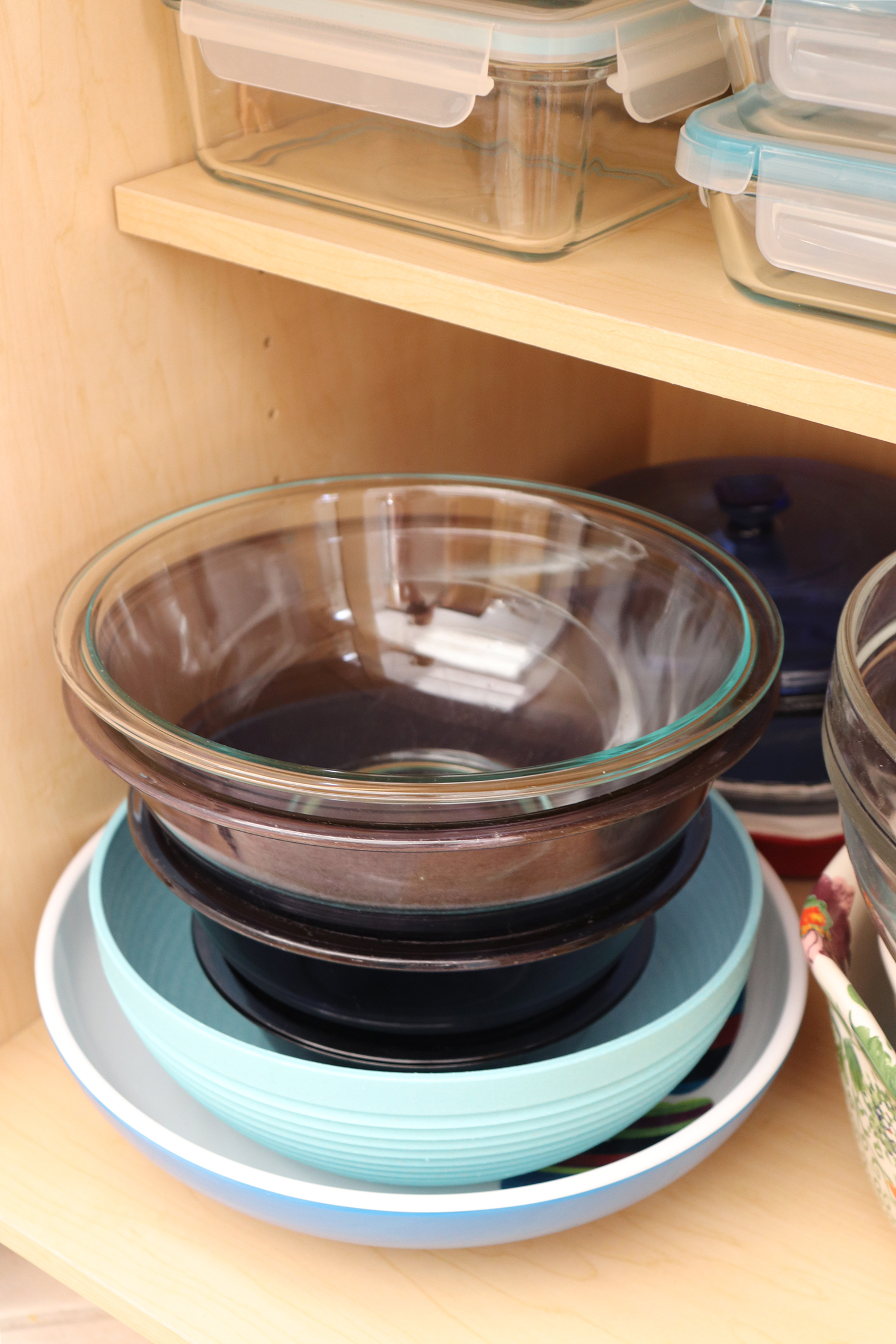
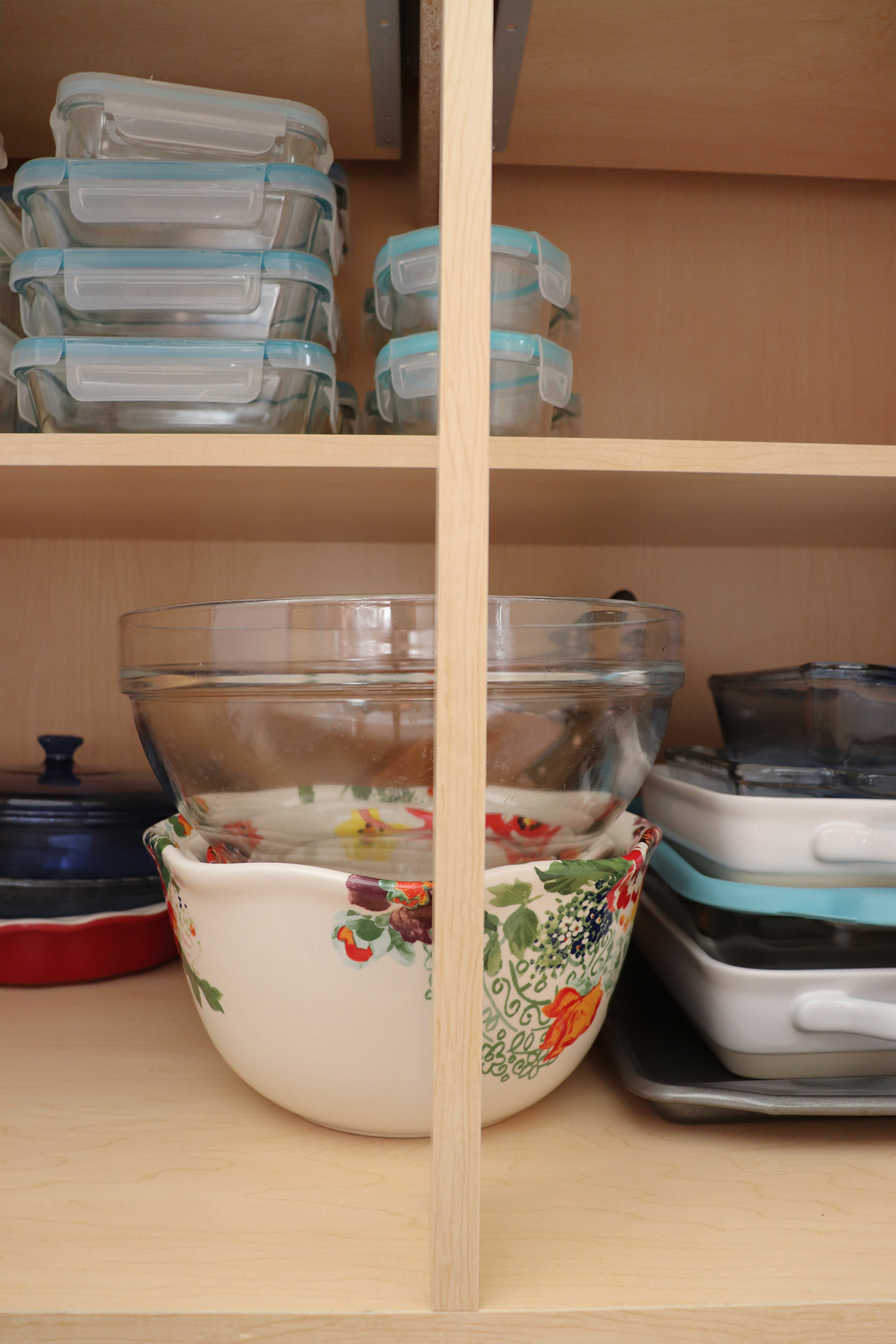
Category 2 – Casseroles
The second category is casseroles. I have rectangular casseroles and round casseroles, as well as pie dishes. I decided to group them by shape. So the two subcategories are:
Subcategories:
- Rectangular Casseroles
- Round Casseroles
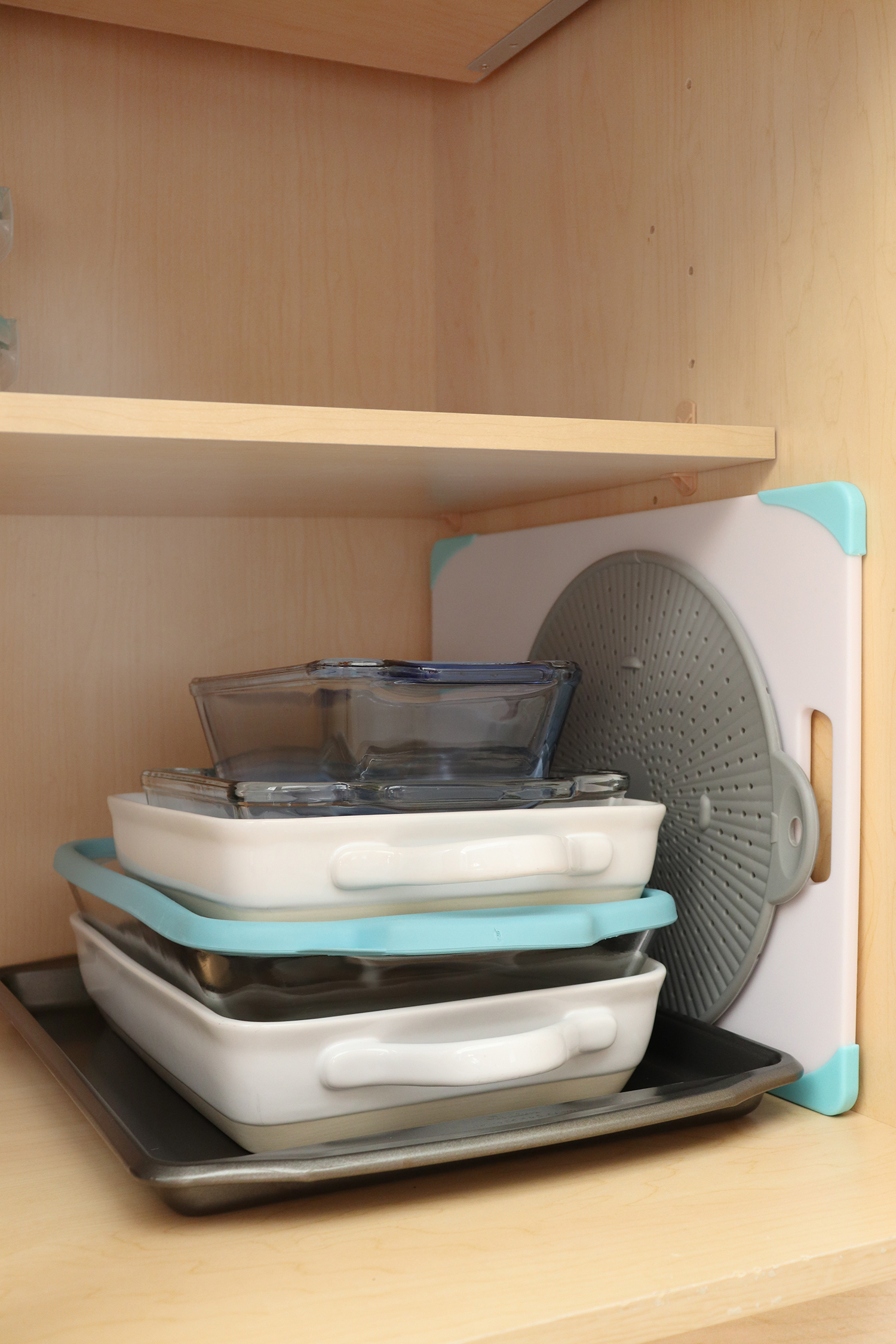
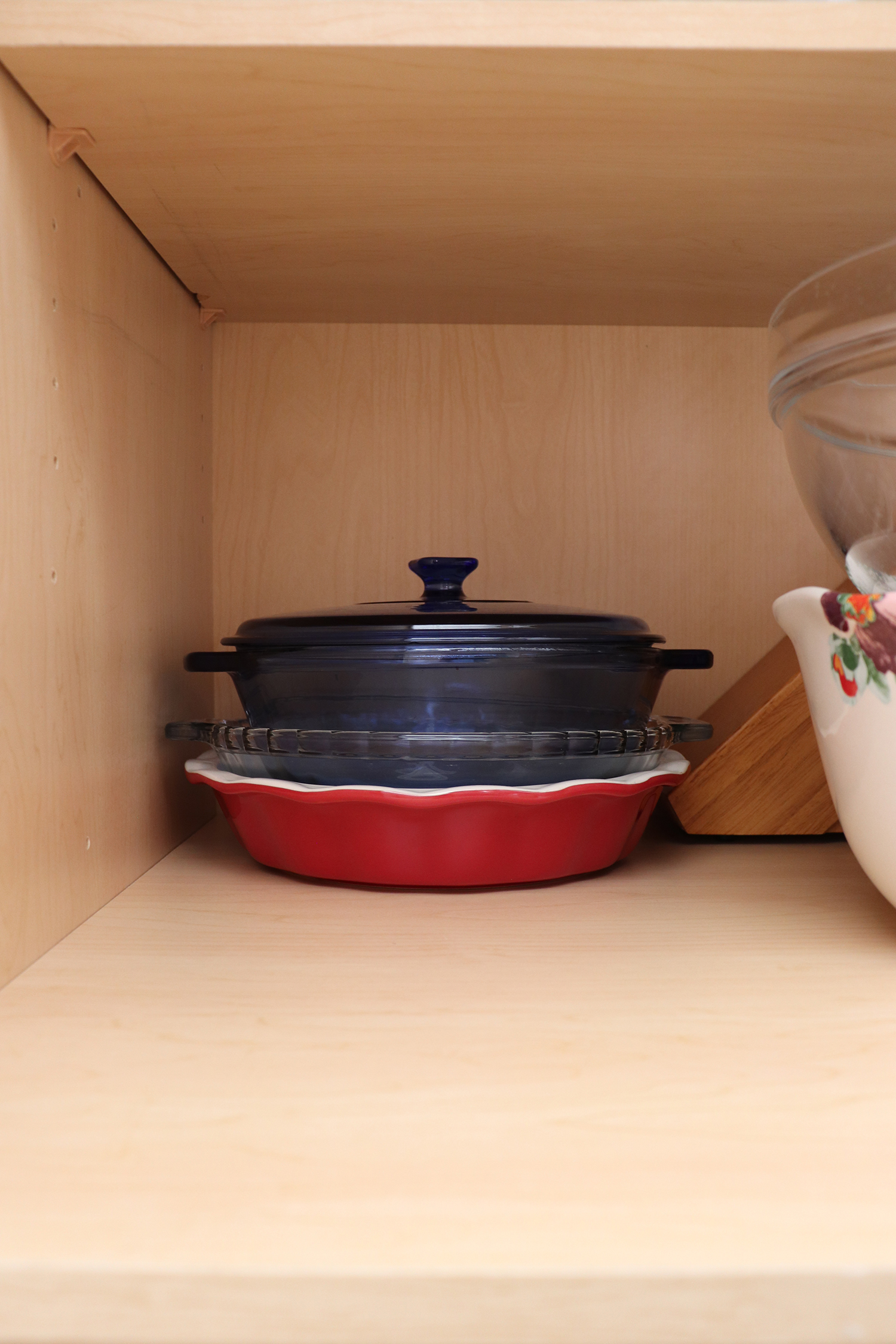
Category 3 – Food Storage Containers
The disorganization and the large amount of food storage containers I own were the catalysts to the organization of this cabinet in my kitchen. After purging, I still had many food storage containers to organize. So many that they take up an entire shelf inside the kitchen cabinet. These are the subcategories I came up with:
Subcategories:
- Glass food storage containers
- Plastic food storage and to-go containers
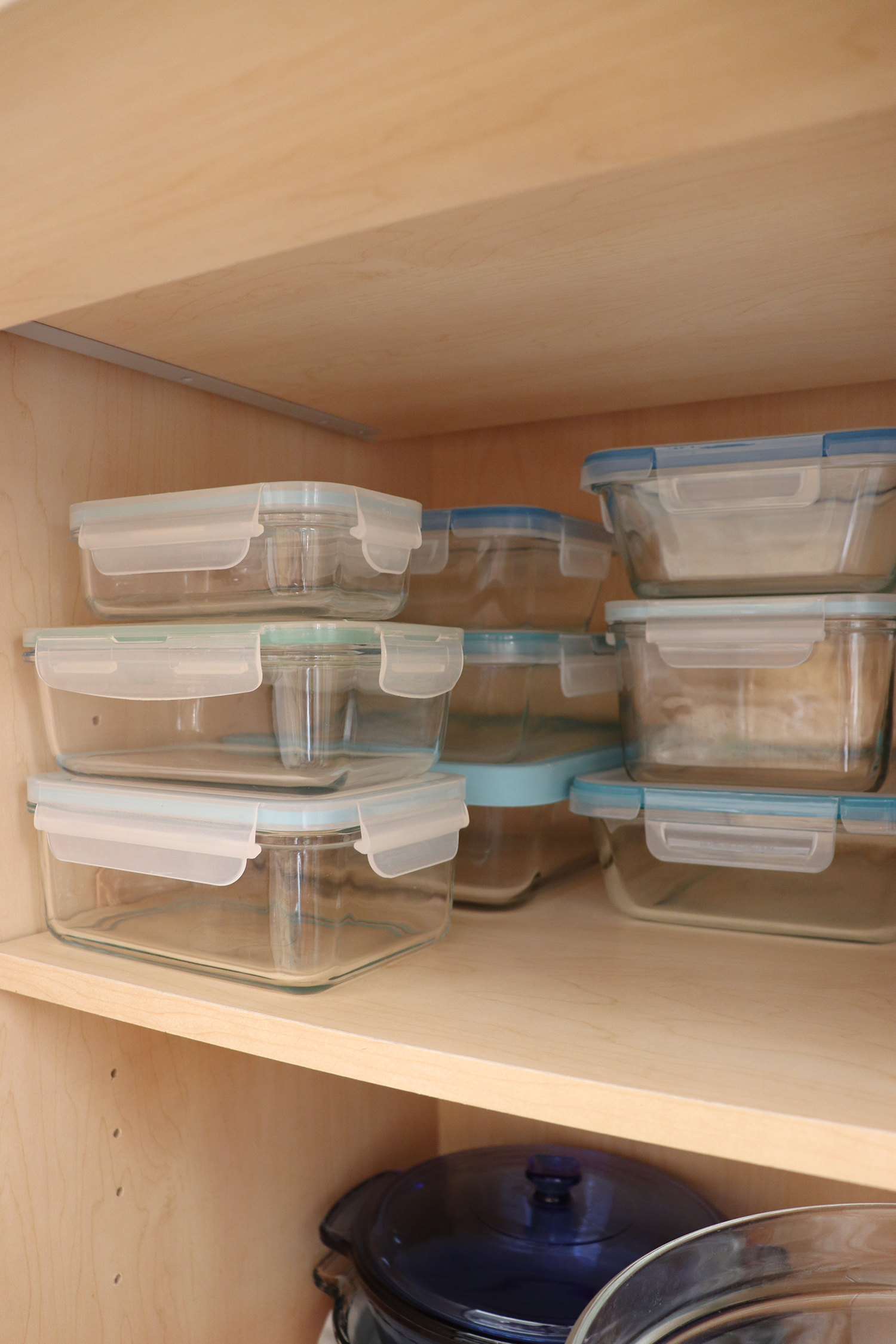
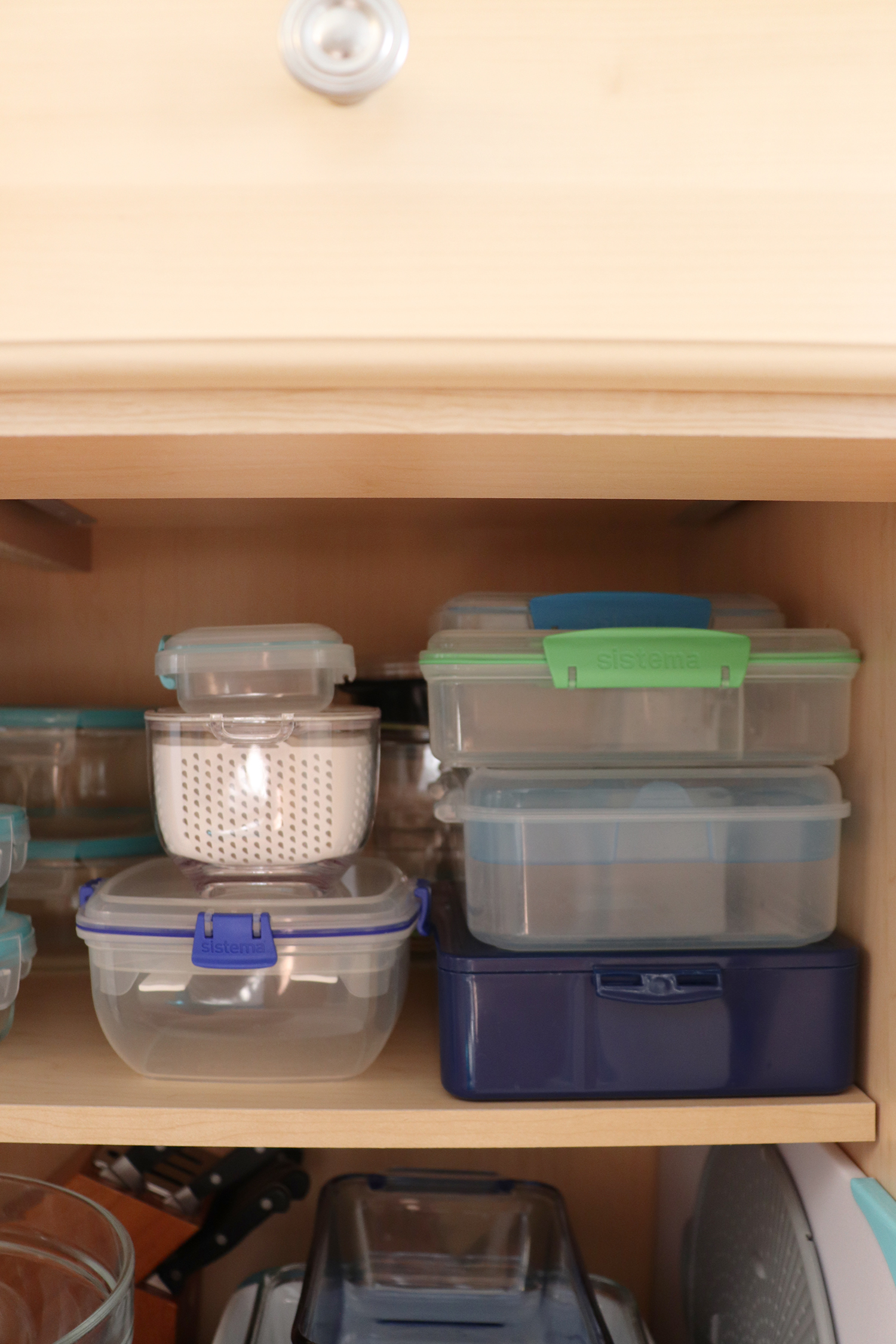
This finishes the categorizing process. As you can see, when you decide to categorize things by their similarities, almost instantly, there’s a sense of order. This is because you can neatly stack things, and seeing similar groups is pleasing to the eye.
2. Order
Once you create groups, creating some order within that group is important. For example, I nested the rectangular casseroles from largest to smallest. Similarly, I placed the larger glass food storage containers in the back and the smaller ones towards the front.

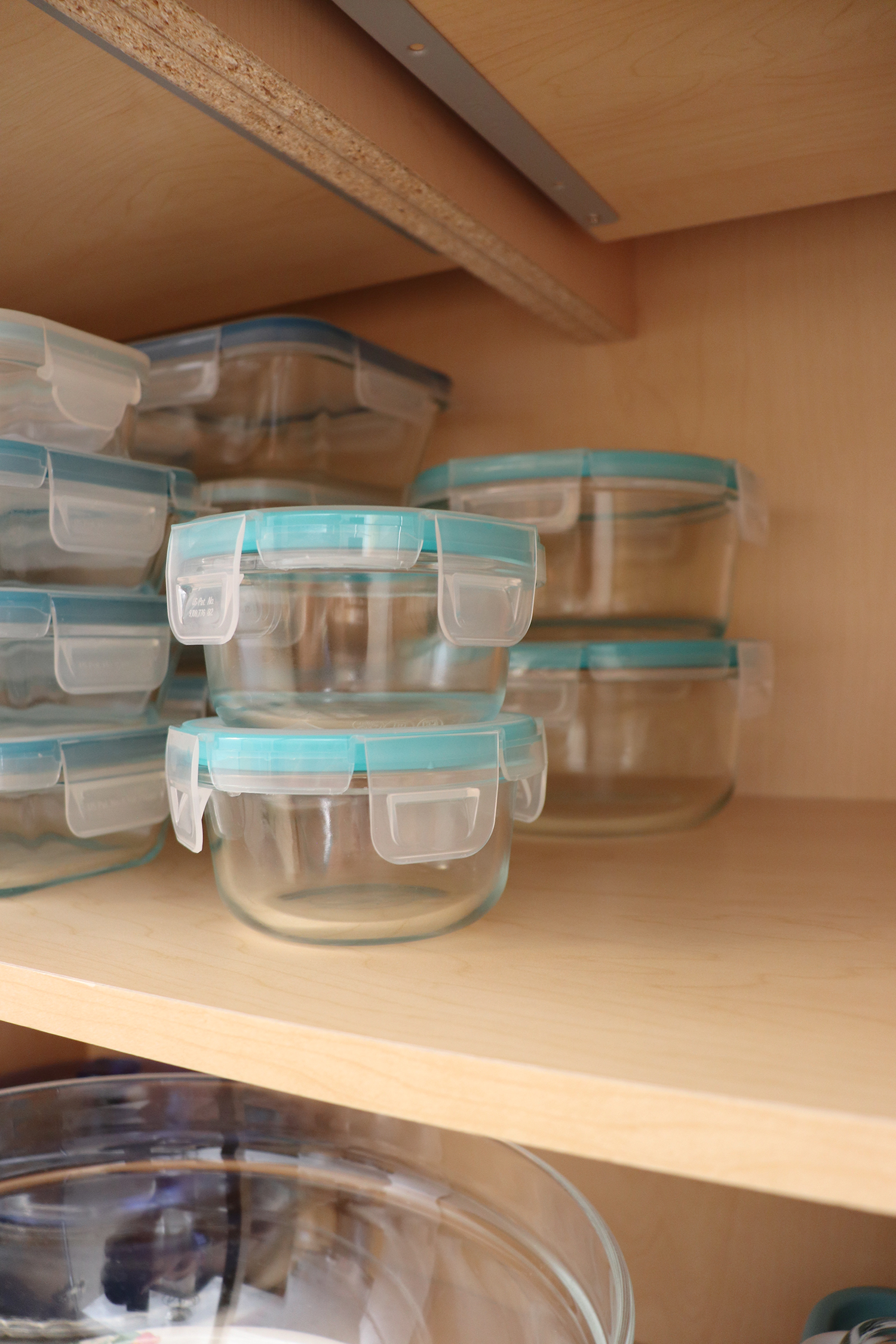
It could be a bit of a nuisance having to pull out four casseroles to get to the large white one with handles. But this is something I do not use every day. When it comes to organization, we always look for function and beauty. Sometimes one prevails over the other. In this case, I preferred the order. It is still functional, just not at the ready.
The same goes for the organization of food storage containers inside cabinets. Because I keep them on a shelf inside the cabinet, I keep the lids on them and stack them. This organization system for food storage containers and Tupperware works for me. Some kitchens boast amazing deep drawers where you can nest the containers and set the lids aside. It’s ultimately up to you and the space you have.
3. Proximity
I always use the proximity principle and explain it in detail in my post about small kitchen appliances organization inside cabinets. Things that are used frequently should be placed the closest. This is one ‘rule’ I wanted to keep in mind when I started organizing the shelves in this kitchen cabinet. Here are the examples.
The lunchbox containers
Even though the lunchbox containers fall into the subcategory of plastic to-go food containers, I use them five times a week. I grab them every morning while preparing my son’s school lunch. So instead of stacking them with the rest, at the risk of losing them in the big group, I placed them the closest.
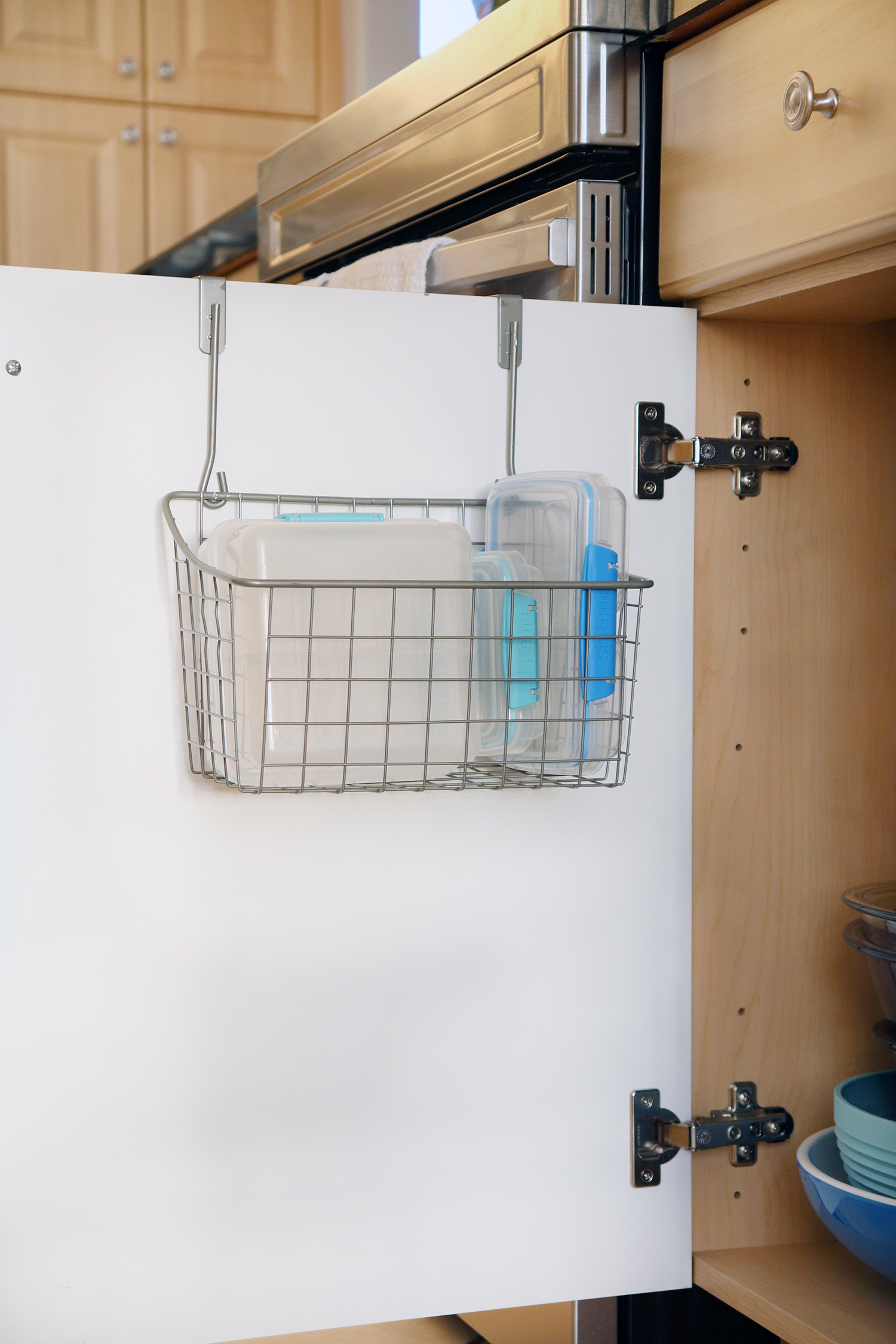
To achieve this, I used a small over-the-cabinet basket which in the past was used to hold food storage containers. As years go by, we make changes. This is an inherent part of the home organization process. We need to adjust to changes constantly while keeping order and function.
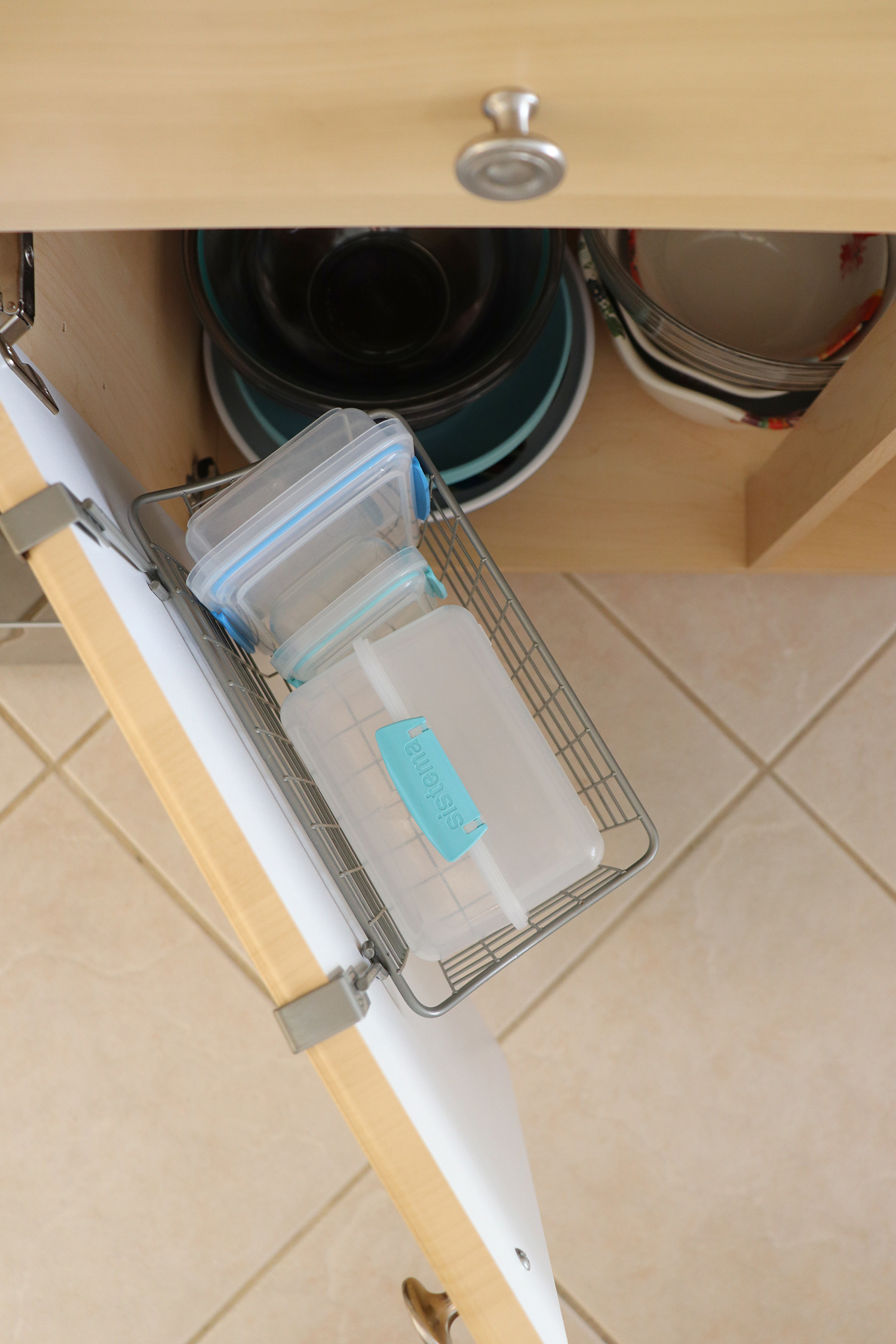
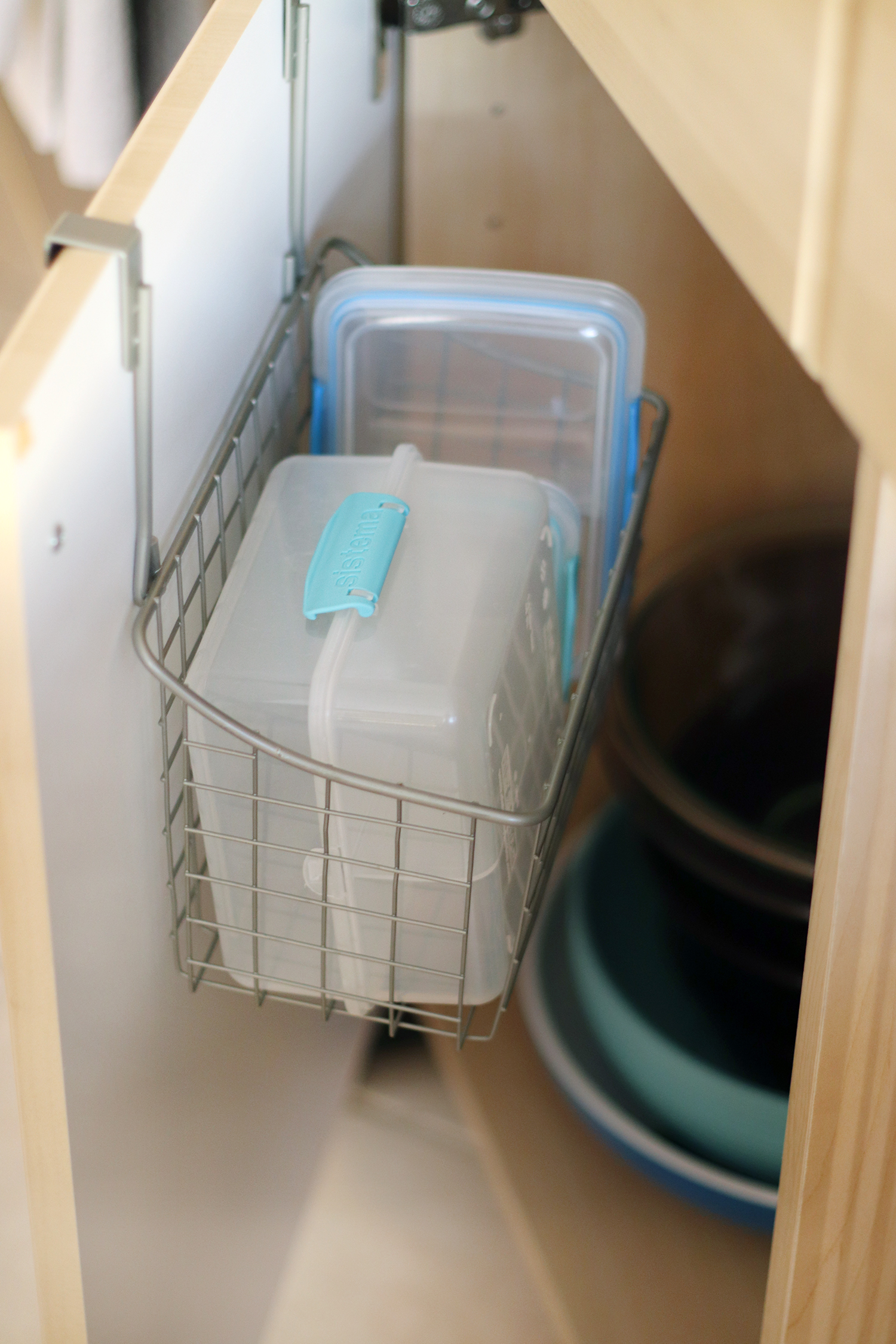
The kitchen bowls
I organized the most used bowls on the left side of the cabinet. Conversely, I placed the least used bowls to the right behind the ‘column’ that divides the cabinet in two. This wood slat is annoying, but I must work with it. So, I planned to place the most used bowls, the closest and the least used, behind the slat.
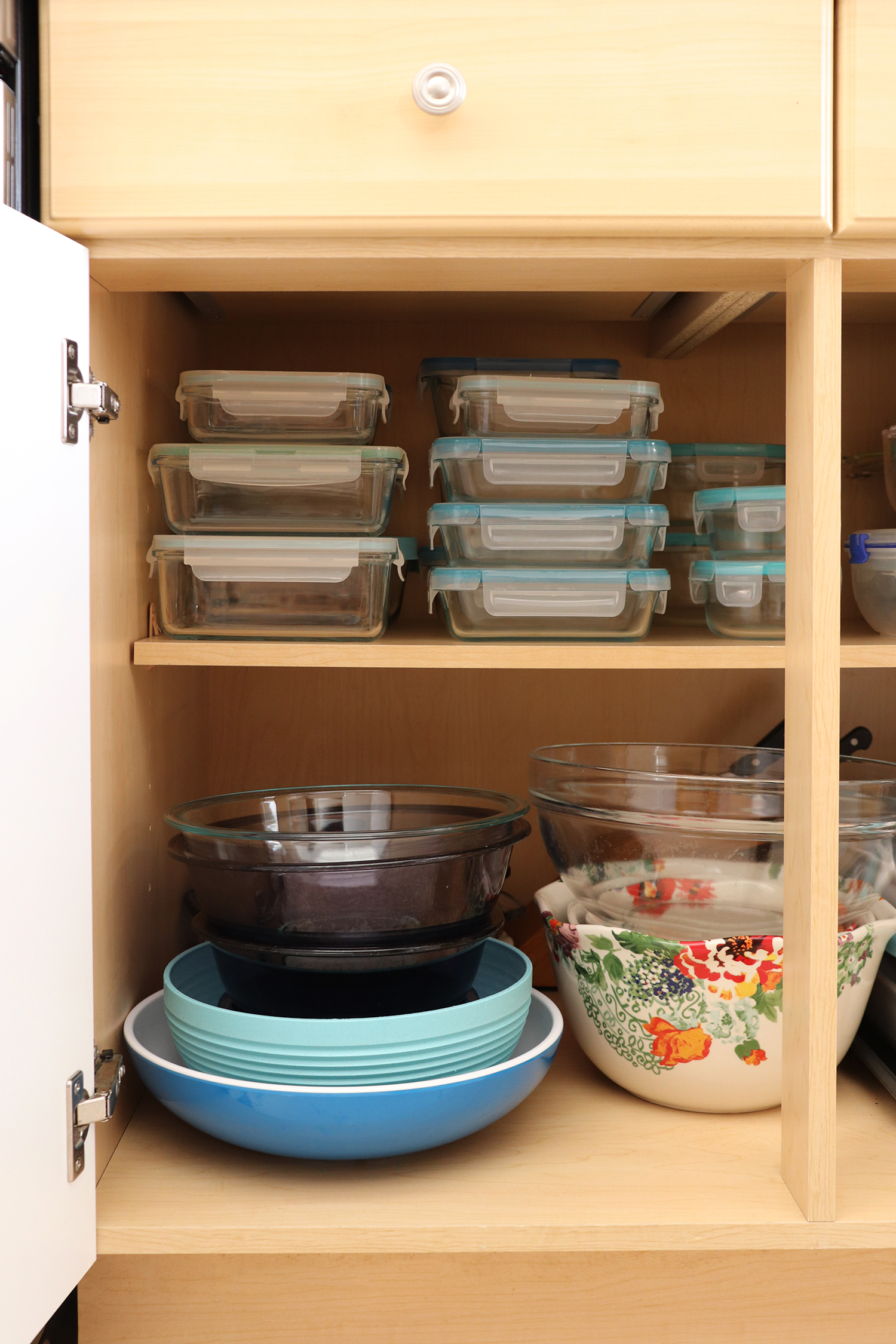
The knife block
I switched from a countertop knife block to an in-drawer knife block a few years ago. I can not begin to tell you how this little change made me so happy. You can see how I use it inside the silverware drawer.
With that said, I still keep the knife block. One of those things I save just in case. But because I do not need it, I placed it in the back and middle center of the cabinet.
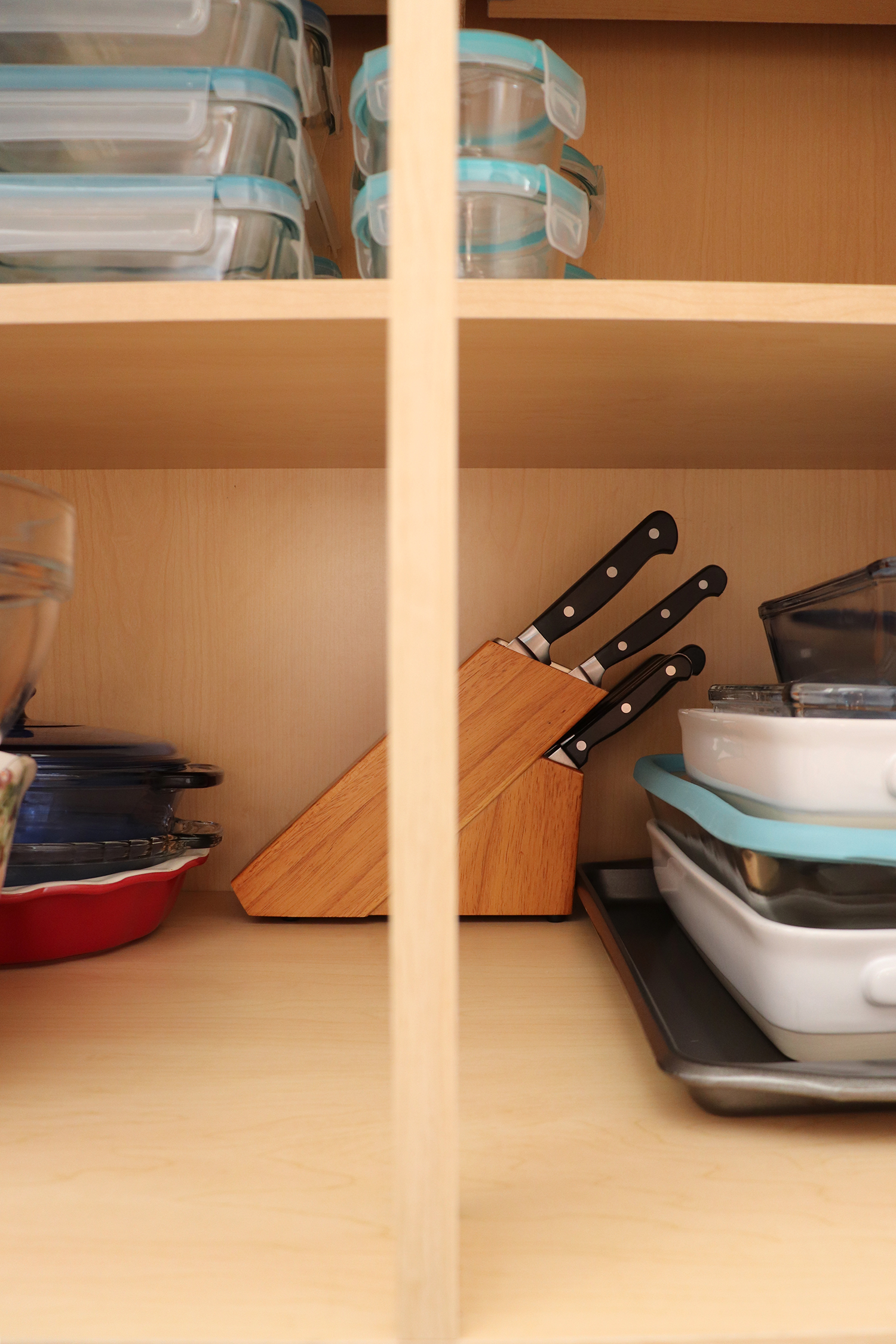

As you can see in the images above, I organized the least used items in an area where reaching is a little harder.
Most Used to-go Food Containers
I pushed to the back of the cabinet the least used plastic containers. In front of them, the most used.
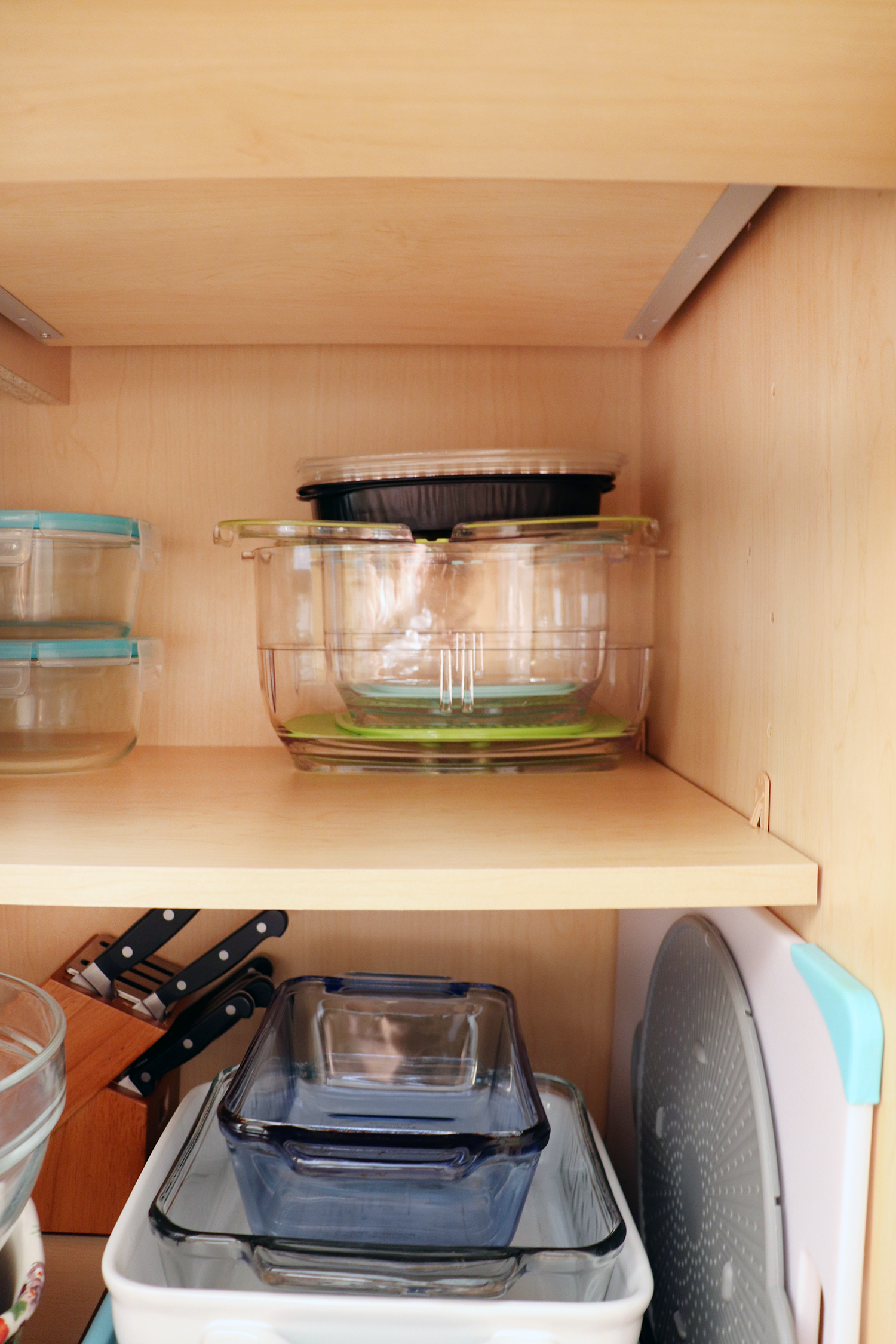

4. Ease of Use
Lastly, the fourth principle to remember is ease of use. I keep returning to the example of how I store kitchen appliances because it’s on point. Things should be placed to be used easily. In kitchen cabinet organization, using this principle will save you prep time and aggravation.
I mentioned how aggravated I was with this kitchen cabinet’s arrangement. Take a look at the before picture. Besides the clutter and lack of clearly defined categories, nothing was arranged with ease of use in mind. Here’s how I organized thinking ease of use.
bowls stacked backwards
This one might sound counterintuitive, but it’s actually a time and frustration saver. It allows ease of use. Nesting bowls are wonderful space savers, and they give a neater look. However, reaching out for one when you’re in a pinch can be frustrating.

So, I decided to break the rules and allow myself some ease of use. I stacked the nesting bowls from smallest to biggest. Some (the two bottom ones) do not need to be this way because they’re different diameters; hence easier to separate.
The Smallest Food Storage Containers
You have to work with what you have. Again, the wood slat is in the way for easy reach. Because I need to use the whole length of the kitchen shelf, I placed the smallest food containers behind the slat.
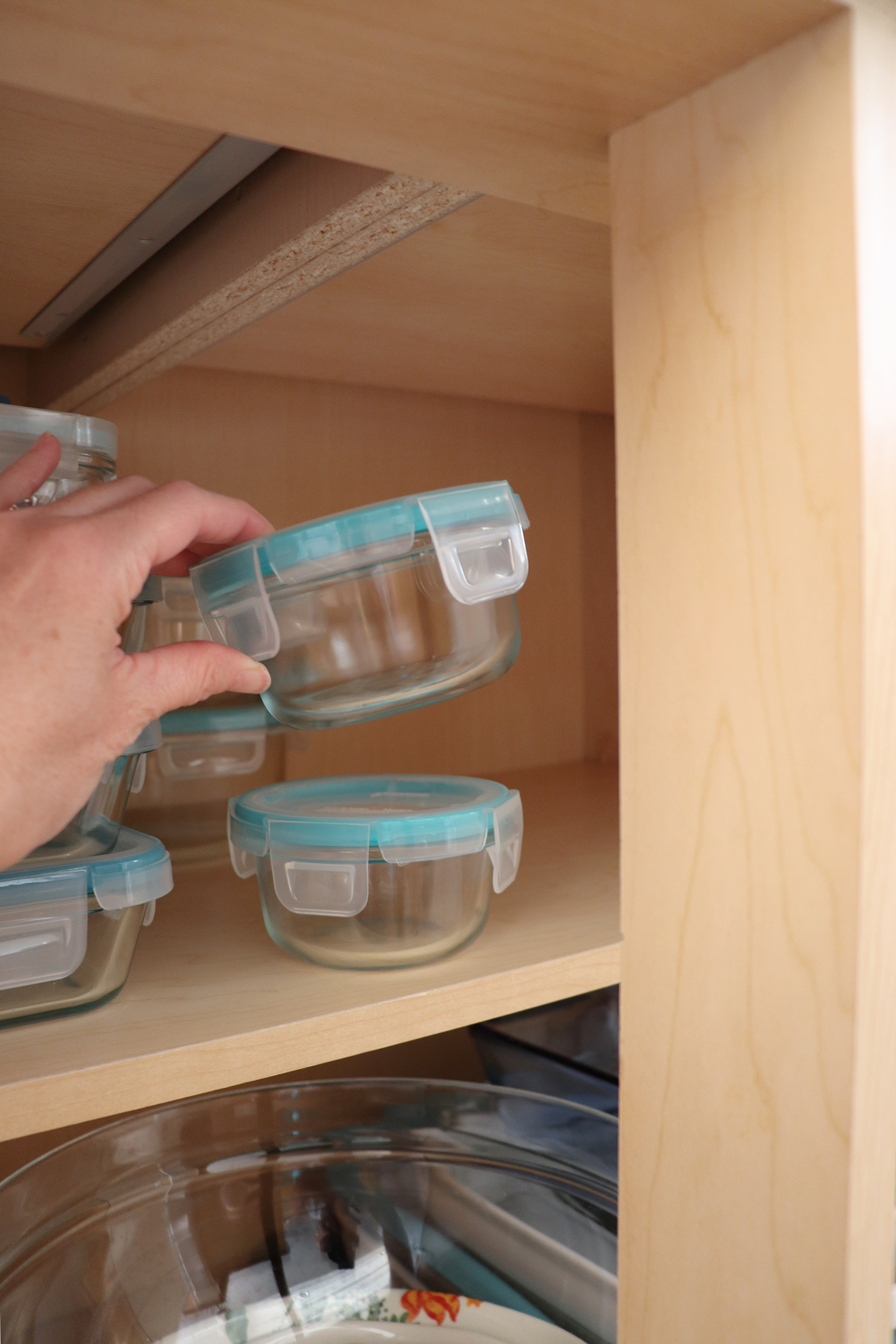
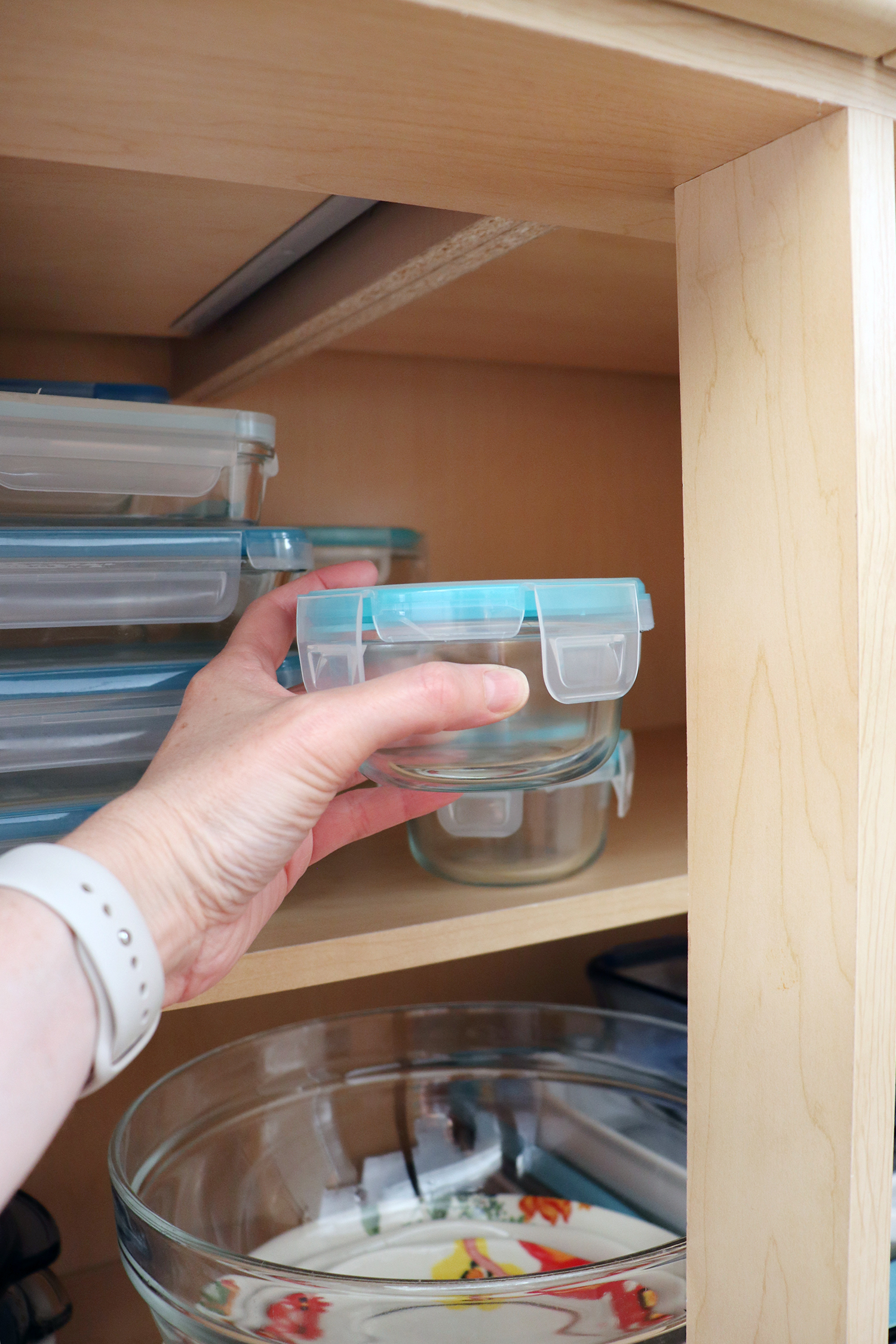
By doing this, I can reach and pull them in and out of the shelf without struggling with the slat in the way. They are small enough to fit through.
Kitchen Cabinet Organization Resources
As you can see, the way I organized this particular kitchen cabinet, I did not need anything but the shelves. If you are looking for more sources to organize cupboards and kitchen cabinets, I have a few other kitchen organization projects that will inspire you!
Updated Under The Kitchen Sink Storage
How To Keep Pots and Pans Organized
Canned Goods, Spices & Seasonings Organization
How to Store Small Kitchen Appliances

